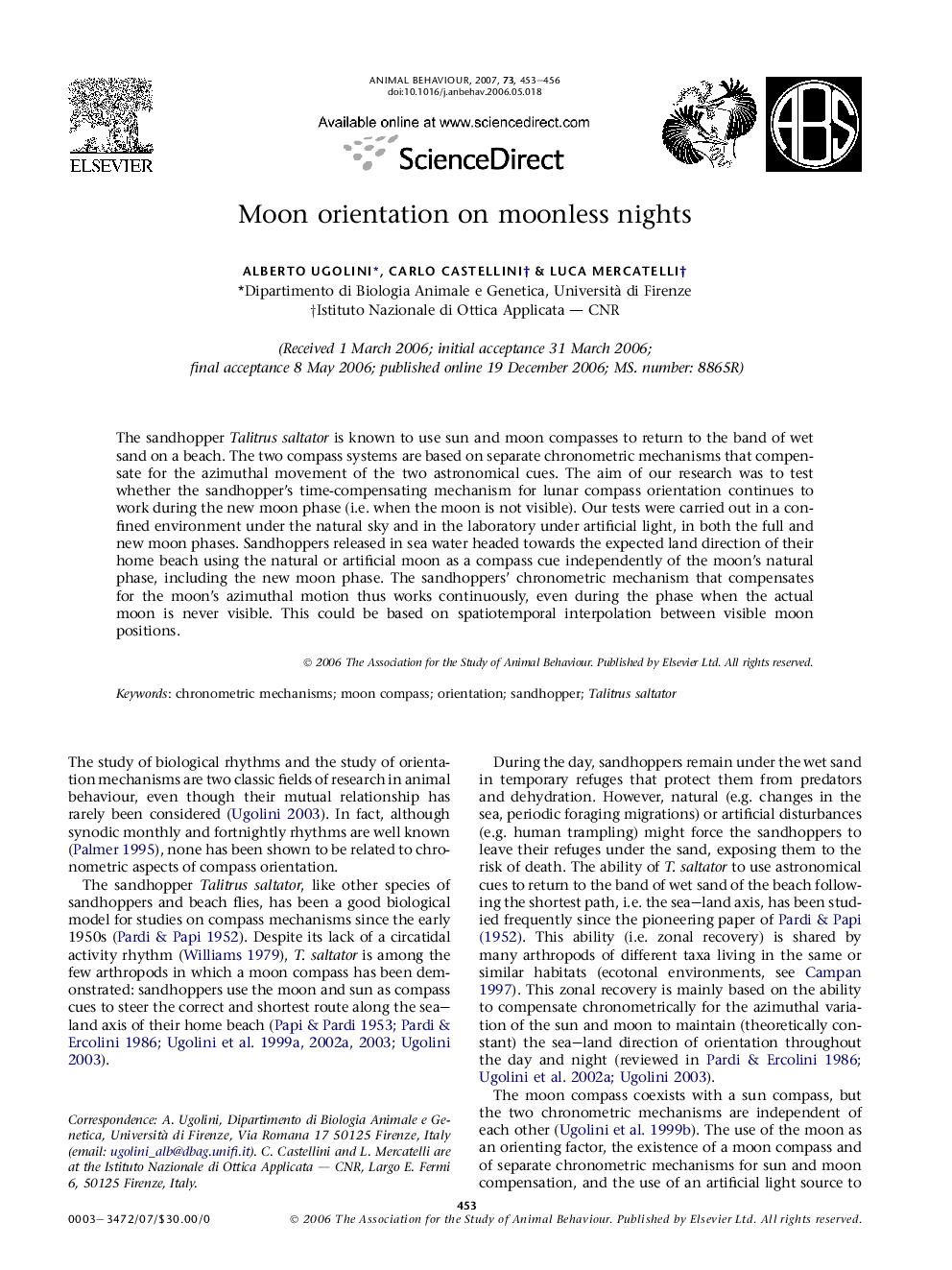| کد مقاله | کد نشریه | سال انتشار | مقاله انگلیسی | نسخه تمام متن |
|---|---|---|---|---|
| 2419039 | 1104364 | 2007 | 4 صفحه PDF | دانلود رایگان |

The sandhopper Talitrus saltator is known to use sun and moon compasses to return to the band of wet sand on a beach. The two compass systems are based on separate chronometric mechanisms that compensate for the azimuthal movement of the two astronomical cues. The aim of our research was to test whether the sandhopper's time-compensating mechanism for lunar compass orientation continues to work during the new moon phase (i.e. when the moon is not visible). Our tests were carried out in a confined environment under the natural sky and in the laboratory under artificial light, in both the full and new moon phases. Sandhoppers released in sea water headed towards the expected land direction of their home beach using the natural or artificial moon as a compass cue independently of the moon's natural phase, including the new moon phase. The sandhoppers' chronometric mechanism that compensates for the moon's azimuthal motion thus works continuously, even during the phase when the actual moon is never visible. This could be based on spatiotemporal interpolation between visible moon positions.
Journal: Animal Behaviour - Volume 73, Issue 3, March 2007, Pages 453–456